Vasectomy Advocacy: The Time is Now
Written by: Brian Mutebi
Vasectomy is a safe and effective contraceptive method that offers benefits for individuals and heterosexual couples who know they do not want to have any—or any more—children. According to Breakthrough ACTION, a USAID-funded project that develops and tests new tools for social and behavior change in family planning and reproductive health (FP/RH), increasing access to vasectomy would increase method choice, improve family planning and reproductive health outcomes, and promote gender equality by providing an opportunity for men to share responsibility for reproduction.
The clock is quickly ticking towards 2030, the year we ambitiously set for ourselves to achieve the Sustainable Development Goals (SDGs). Key to the achievement of the SDGs is the realization of universal access to sexual and reproductive healthcare services. Deliberate, sustainable investment in family planning services is critical in this equation. One of the guiding principles of the FP2030 vision is the empowerment of women and girls and engaging men and boys. The vision stipulates: “Positive male inclusion is needed to truly transform normalization of family planning and at the same time share the burden of the decisions and implications of family planning. That must happen in tandem with the empowerment of women and girls to create true equity.”
Male participation in family planning
USAID’s 2018 publication Essential Considerations for Engaging Men and Boys for Improved Family Planning Outcomes (from the Office of Population and Reproductive Health) describes the possible roles of men and boys in family planning as users, supportive partners, or agents of change:
- “Users when they use male-controlled modern contraceptive methods (e.g., condoms and vasectomy) or a cooperative modern contraceptive method that requires active participation from both partners (e.g., the Standard Days Method).”
- “Supportive partners when they have a positive impact on their partners’ family planning choices and contraceptive use through increased couple communication and equitable, joint decision-making, resource provision for family planning services and/or support for continued use.”
- “Agents of change when they use their social capital, status, or power to take public action outside of their intimate sexual relationships to address barriers to FP and contraception, particularly those related to harmful gender norms and inequalities. Public action must take place in collaboration with women and women’s groups, and may include discussion and advocacy to influence family and community members, peers and religious and policy leaders to promote gender equality.”
Vasectomy is widely unavailable, underfunded, and underutilized
“We have made progress over the last decades in engaging men and boys as supportive partners and agents of change,” says Olivia Carlson, Program Officer for the Breakthrough ACTION project, “but less focus has been paid to engaging men as family planning users.” Carlson says that vasectomy promotes the role of men as caring partners by allowing men to share responsibility for reproduction, and that increasing access to vasectomy would benefit both individuals and couples.
However, she adds that—despite its critical role in ensuring method choice, increasing gender equality, and improving reproductive health outcomes—vasectomy is widely unavailable, underfunded, and underutilized. Available data indicate that in about two-thirds of FP2030 countries, less than 20% of the population has access to vasectomy.
Vasectomy advocacy resources
The Breakthrough ACTION project developed two resources to boost advocacy for vasectomy. The first, Underfunded and Underutilized: An Argument for Vasectomy Advocacy to Improve Method Choice, builds from existing literature reviews and evidence on vasectomy programming and “demonstrates why now is the time to put vasectomy on the agenda of global actors and country decision-makers,” says Carlson. It highlights the critical role of vasectomy in family planning programming, proposes several goals for advocates’ consideration, and includes detailed resources advocates can use to achieve these goals.
The second resource, the Vasectomy Message Framework, aids advocates to prepare for conversations with coordinating bodies, donors, and low- and middle-income country decision-makers to increase support for the inclusion of vasectomy in family planning and reproductive health funding, national strategies, and programs. The framework provides guidance on key messages to use with stakeholders who may have various goals, constraints, historical experience with vasectomy programs, and attitudes and beliefs about the benefits of vasectomy in family planning programs.
“We hope these materials will lead to increased funding and support for the inclusion of vasectomy in family planning and reproductive health programs and national strategies,” says Carlson. Outside of developing these particular resources, Breakthrough ACTION has produced and contributed to several materials that would be helpful for organizations designing and implementing vasectomy programs, such as the Advancing Male Engagement advocacy tool. Breakthrough ACTION also assisted with the dissemination of the Interagency Gender Working Group’s Do’s and Don’ts for Engaging Men and Boys.
The hurdles
Carlson, however, understands that increasing support for the inclusion of vasectomy in family planning and reproductive health programs has its challenges. “One of the key hurdles will be changing the broad misperception that previous vasectomy programs were unsuccessful and there is little demand for vasectomy, when, in fact, many past vasectomy programs showed signs of success before funding ran out or the project ended,” she says.
In Brazil, for example, data from a six-week mass media campaign in three cities (São Paulo, Fortaleza, and Salvador) indicate that the monthly mean number of vasectomies increased by 108% in Fortaleza, by 59% in Salvador, and by 82% in São Paulo, while Rwanda successfully piloted a no-scalpel vasectomy program.
Further, demographic trends show that couples are having fewer children and ending childbearing at younger ages, meaning demand for permanent methods is likely to grow. As one of only two permanent methods, vasectomy should be an option for all individuals and couples who do not want to have any or more children.
Call to action
Increasing access to vasectomy would increase method choice, improve reproductive health outcomes, reduce gender inequality by enabling male participation in family planning, and reduce health systems costs. The ongoing discussions about family planning in the decade ahead present to us an opportunity to put vasectomy on the agenda of global actors and country decision-makers.
This blog post was originally published on the Knowledge SUCCESS website.

 Knowledge SUCCESS
Knowledge SUCCESS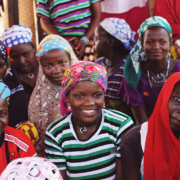 Cambey Mikush/Photoshare
Cambey Mikush/Photoshare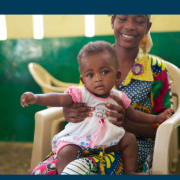 Sara Holbak/VectorWorks/Photoshare
Sara Holbak/VectorWorks/Photoshare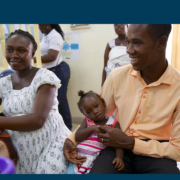 Sarah Hoibak/VectorWorks/Photoshare
Sarah Hoibak/VectorWorks/Photoshare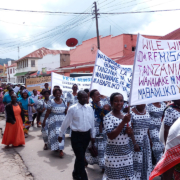 Rebekah Munnikhuysen/US Peace Corps/Photoshare
Rebekah Munnikhuysen/US Peace Corps/Photoshare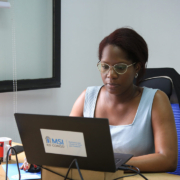 Getty Images/Image of Empowerment
Getty Images/Image of Empowerment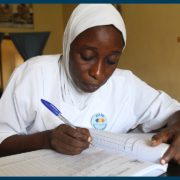 © 2012 CCP/NURHI 2, Courtesy of Photoshare
© 2012 CCP/NURHI 2, Courtesy of Photoshare